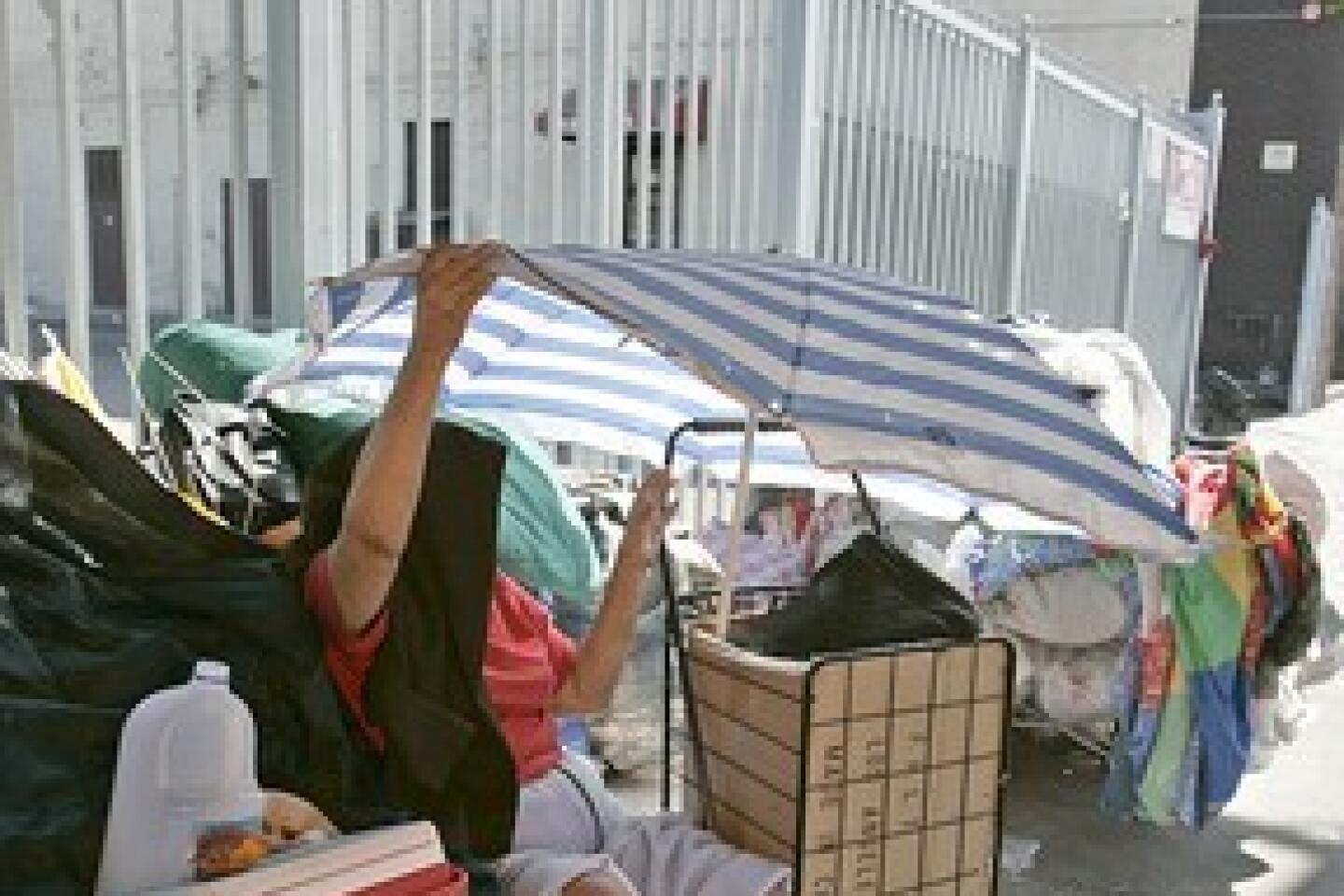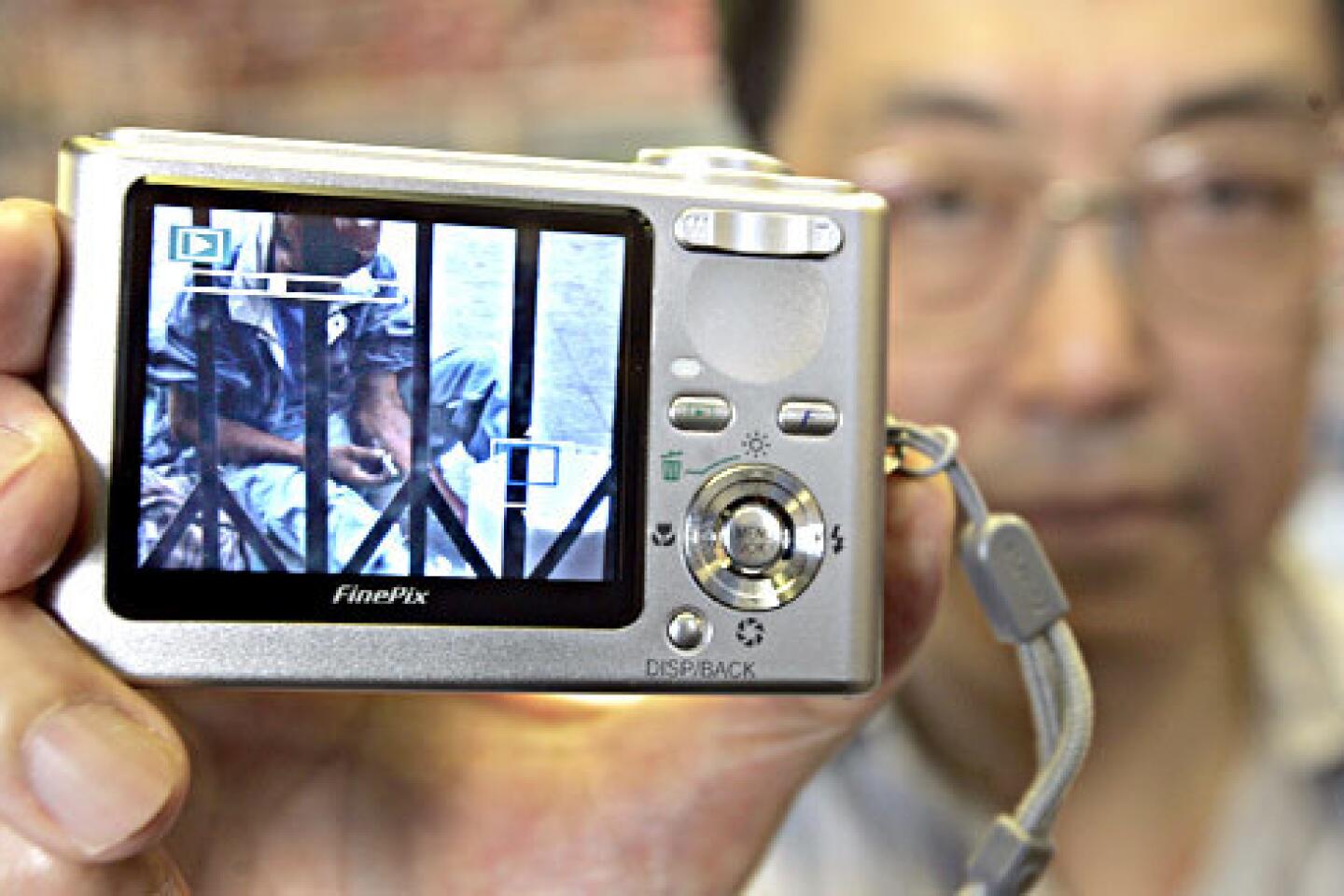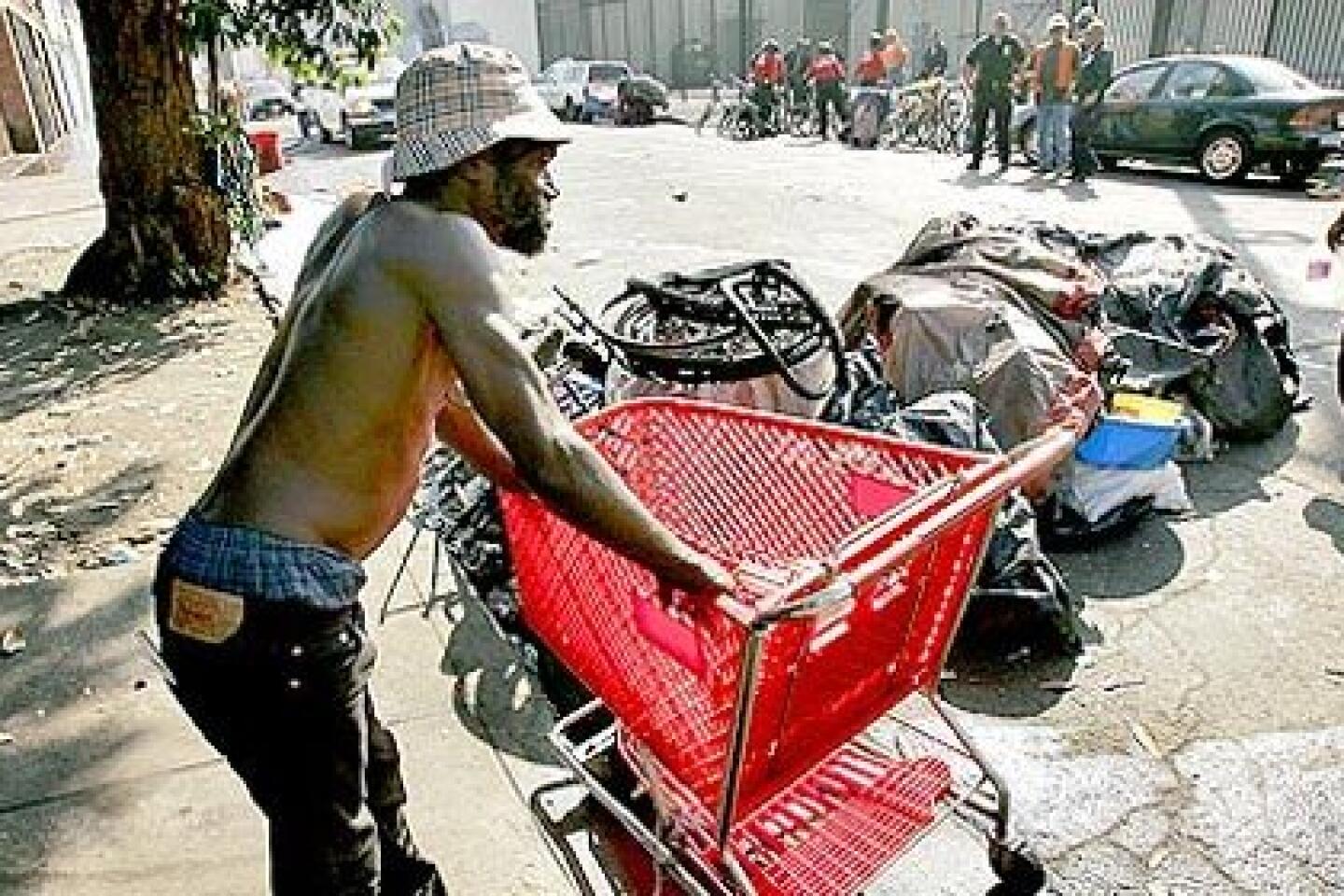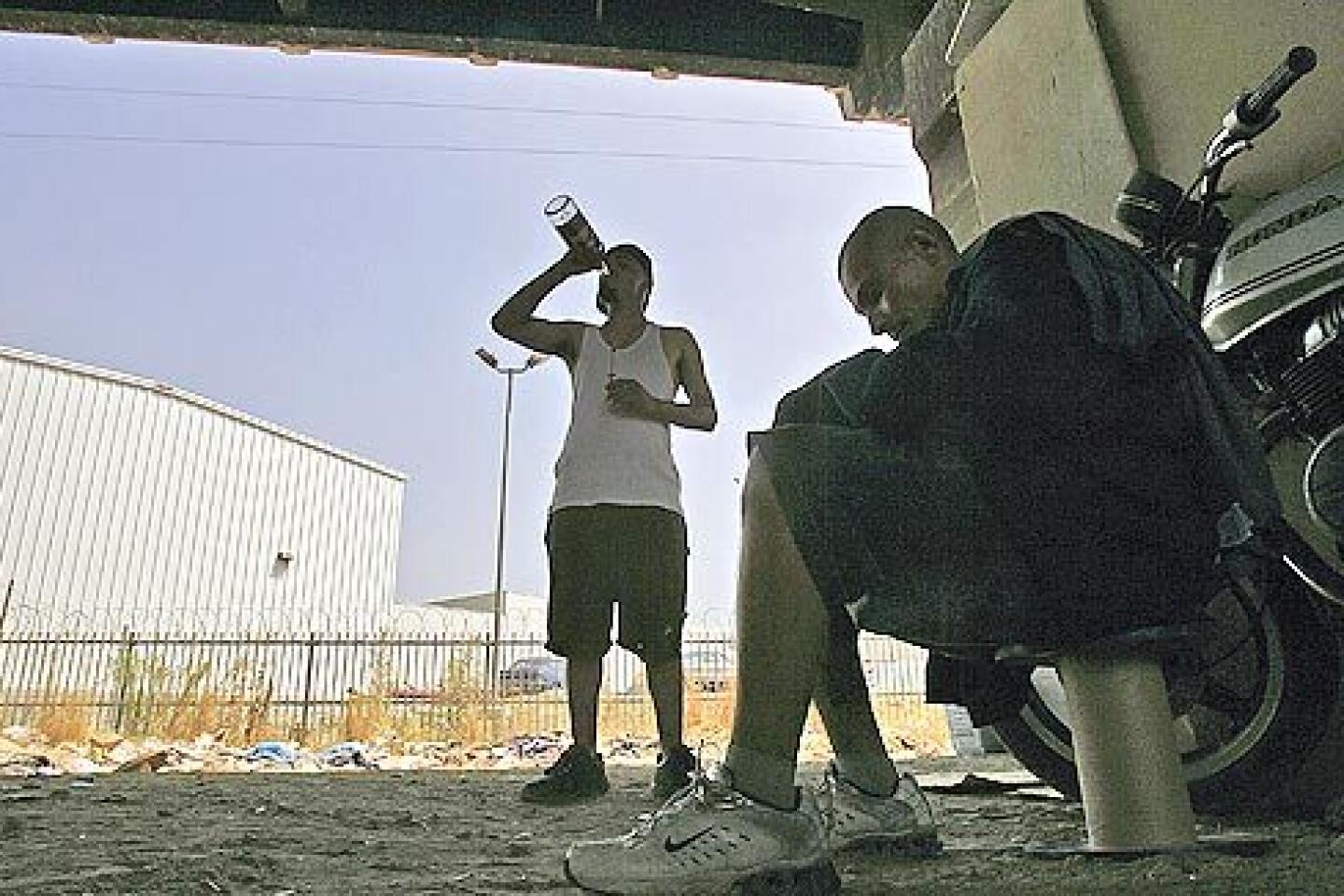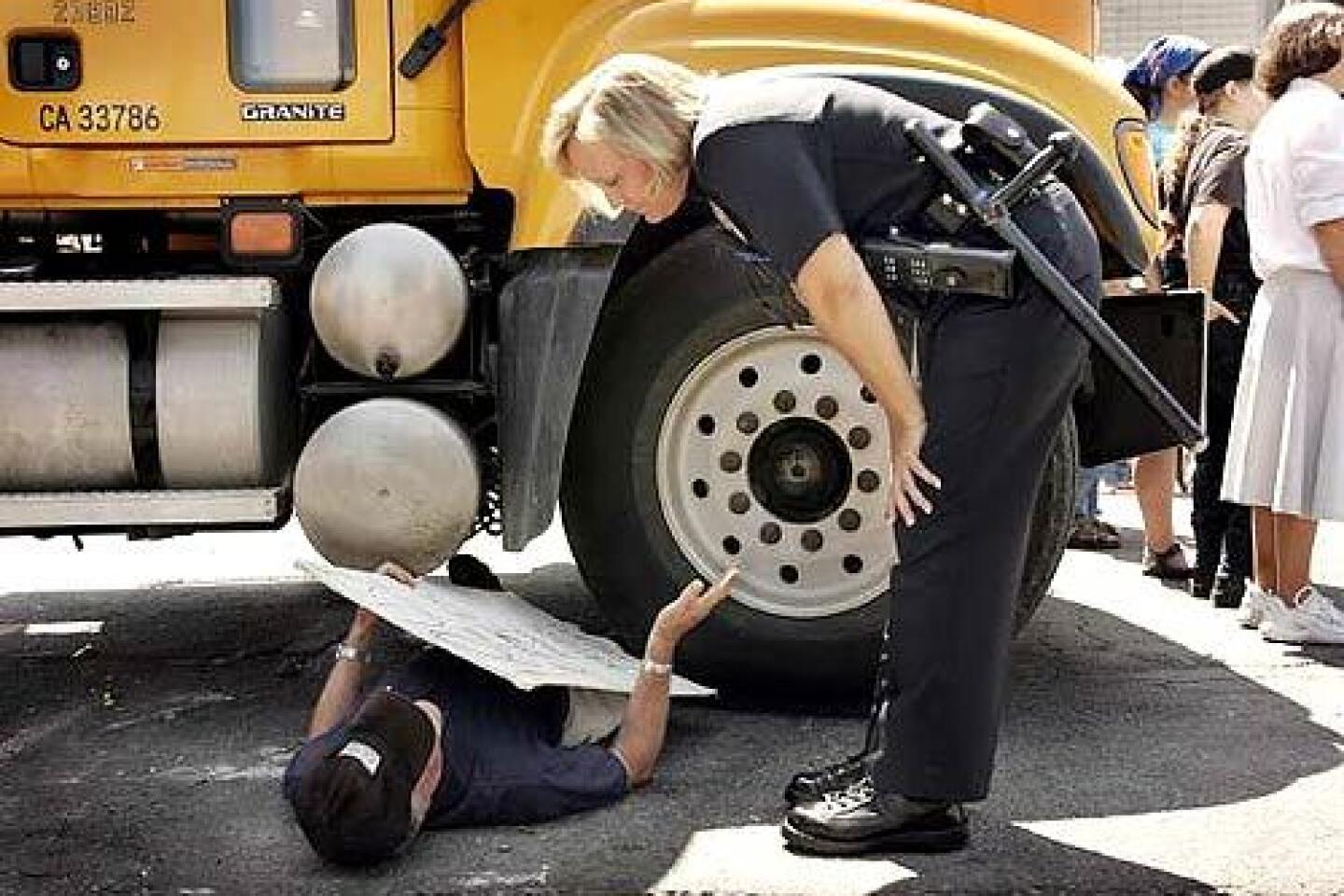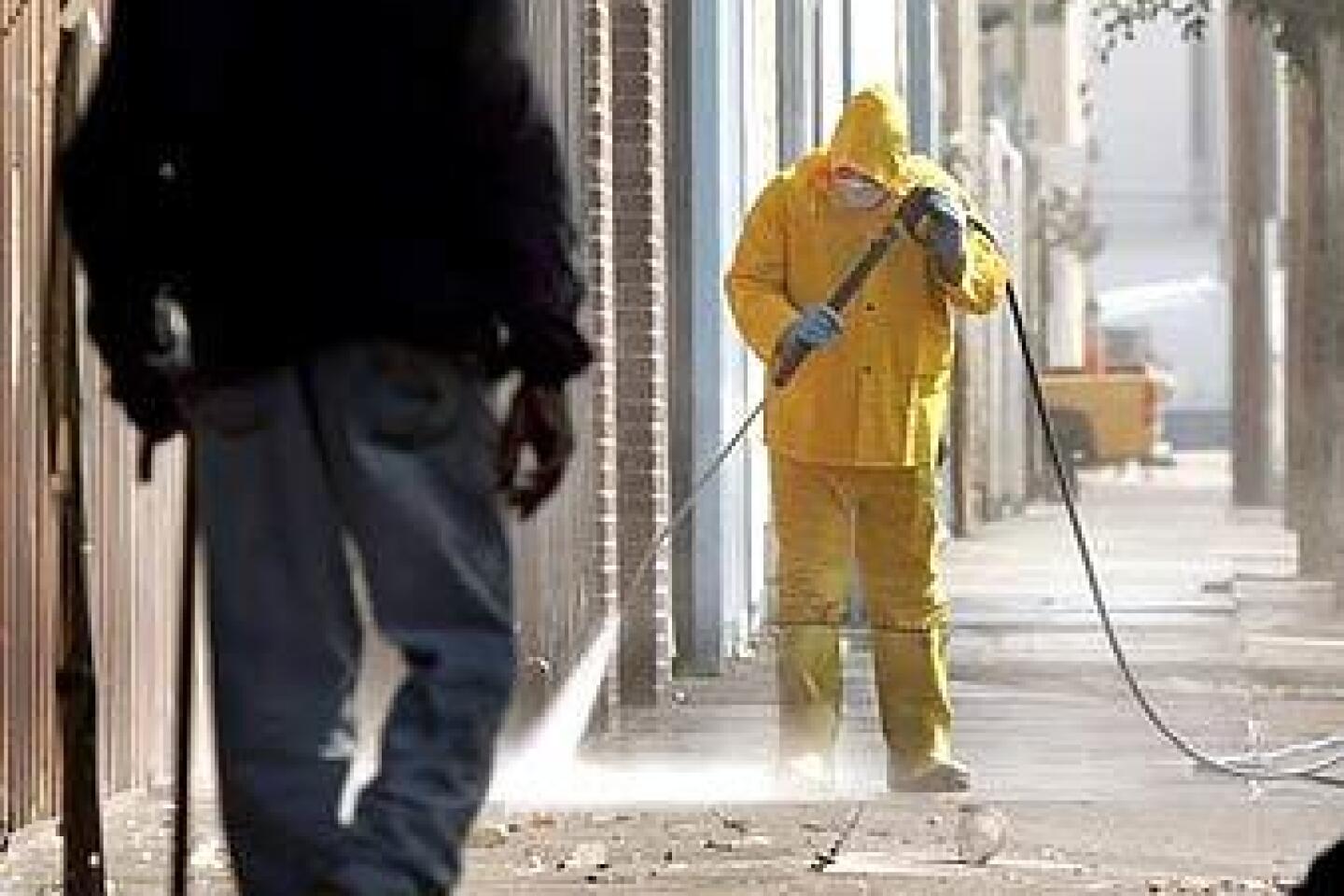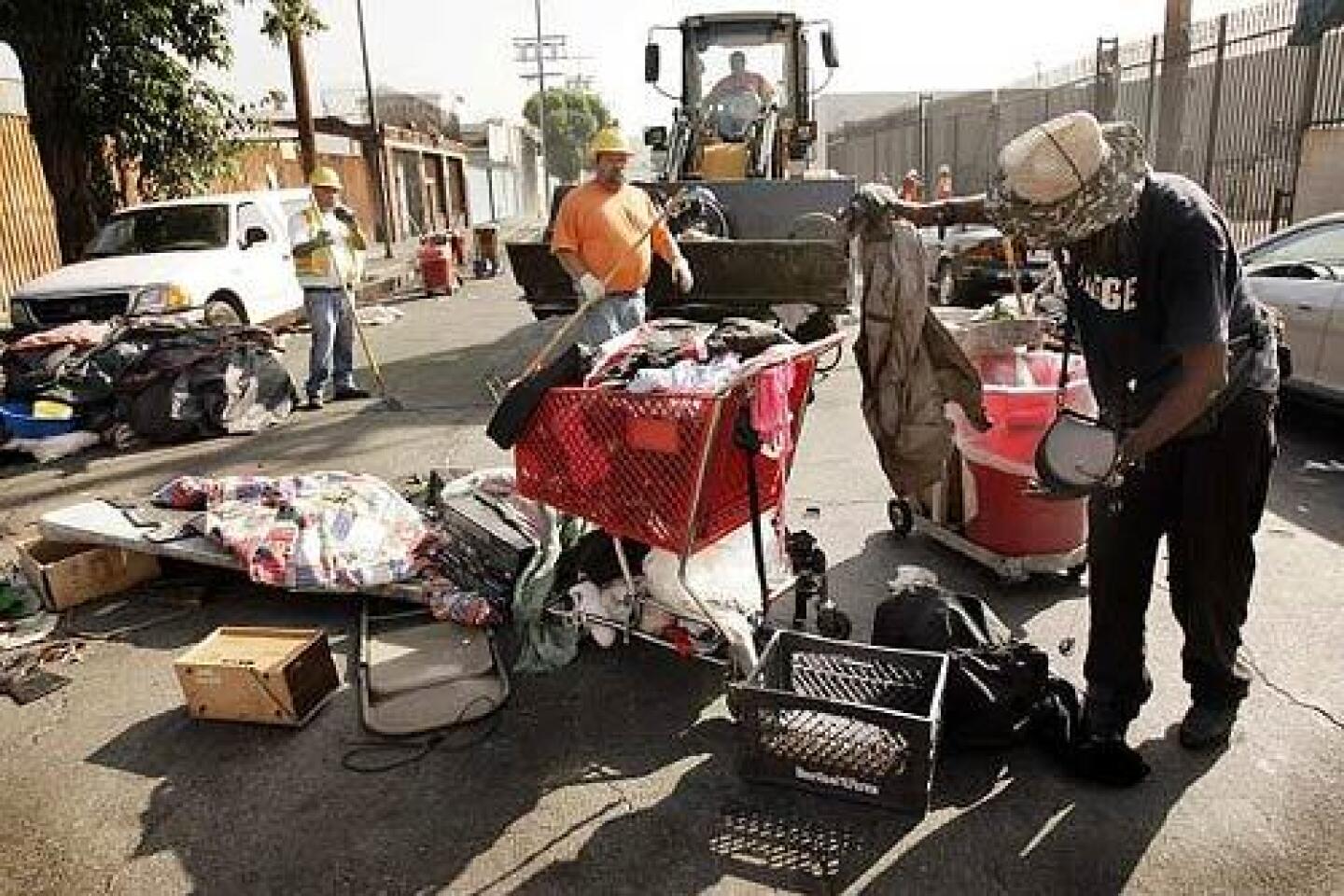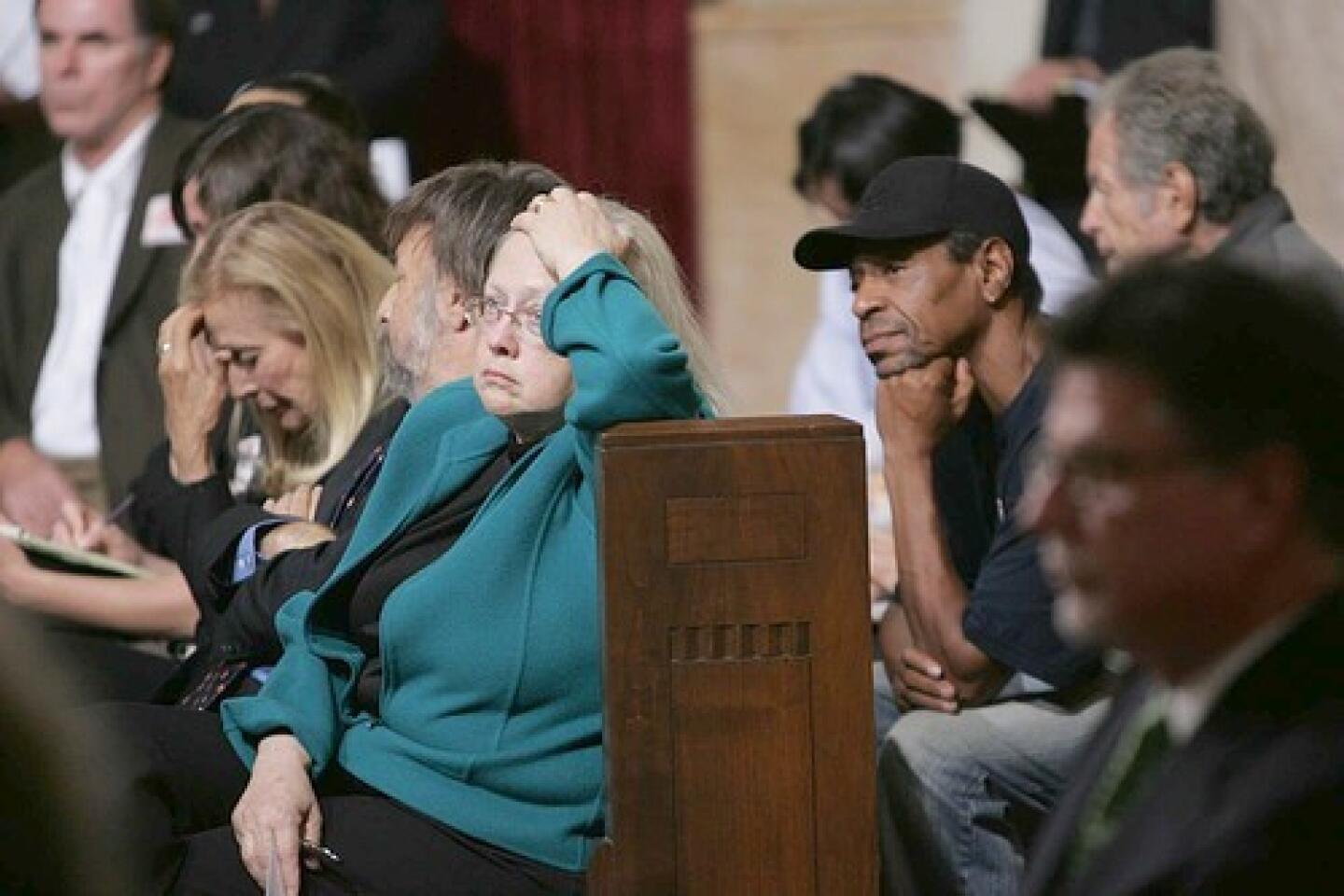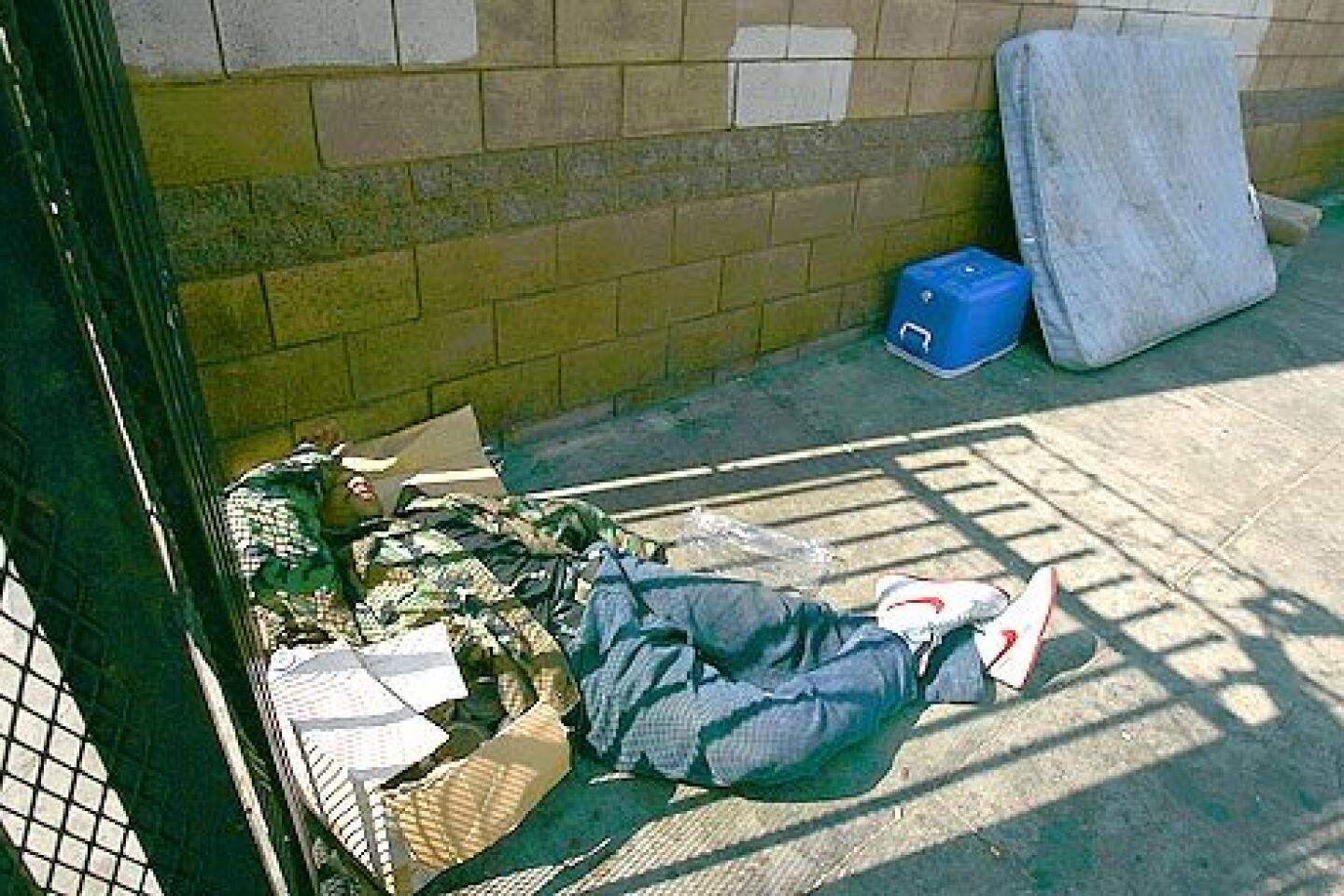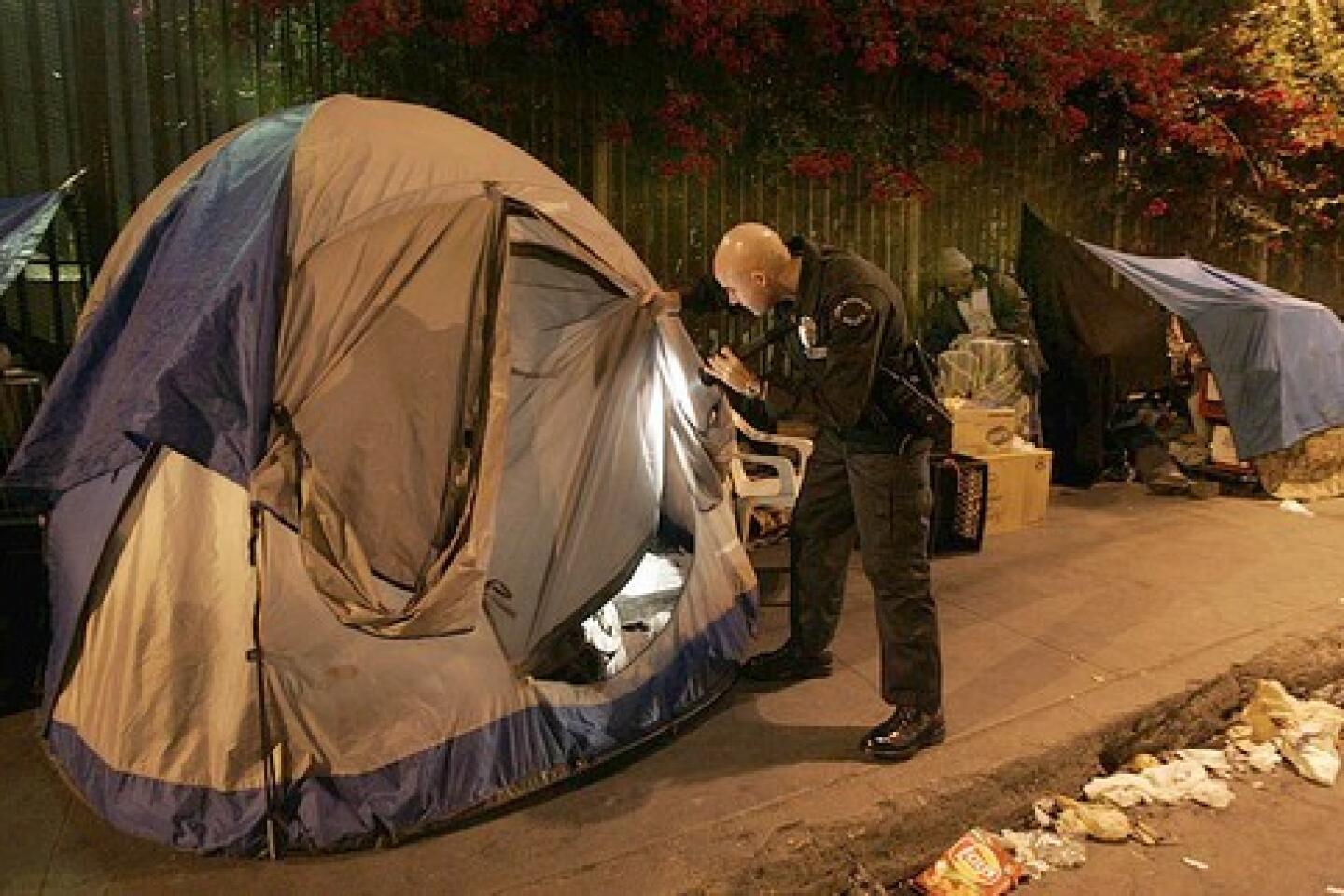Drug Offenders to Be Banned From Skid Row
- Share via
Frustrated by their inability to curtail skid row’s burgeoning drug trade, Los Angeles law enforcement leaders on Tuesday unveiled a new but untested weapon: prohibiting people convicted of drug offenses from returning to the area while on probation.
The strategy seeks to apply elements of gang injunctions, prostitution arrests and “stay away” orders often used in domestic abuse cases to potentially thousands of repeat offenders who buy and sell narcotics in a part of skid row known as Los Angeles’ drug bazaar.
The effort is being led by Dist. Atty. Steve Cooley, making his first major attempt at dealing with the intractable issue of skid row crime that has bedeviled other leaders, including Police Chief William J. Bratton and Mayor Antonio Villaraigosa.
Cooley said that by making the “stay away” order a condition of probation, officials hope to reduce the demand for drugs on skid row.
“At some point, the situation becomes so outrageous, so intractable you have to throw lots of resources at it,” said Cooley, who added that the plan would take effect immediately. “Drug buyers and sellers caught there will know once they get caught again, they’ll go to prison or jail.”
The crackdown focuses on 4th, 5th and 6th streets between Broadway and Central Avenue. The area covers less than a square mile but accounts for 13% of all heroin and cocaine arrests in the city and is considered a magnet for downtown crime.
The plan comes as officials struggle to clean up skid row, which for decades has been plagued by drug dealing, crime and homeless encampments.
Villaraigosa and Bratton have repeatedly vowed to fix skid row by beefing up police patrols and providing more money for homeless services and affordable housing.
But last week, the Los Angeles City Council rejected Villaraigosa and Bratton’s proposal to settle an lawsuit by the American Civil Liberties Union over the way the LAPD deals with homeless encampments.
Despite the intense focus on problems in skid row over the last year, many residents and merchants complain that drug dealing appears to be getting worse, and LAPD headcounts have found an increase in homeless encampments.
The “stay away” plan was drafted by the LAPD, Cooley’s office, the county Probation Department and Superior Court judges, who have agreed to make the orders a routine part of drug cases involving people arrested around skid row.
Authorities would keep a database of probationers who are banned from the area. If people on the list are found, they can be arrested immediately on a probation violation even if they have not committed any other crime.
Officials say they see the plan as a way to target outsiders who come downtown seeking drugs.
Such tactics are “an excellent way to whittle down the number of criminals in the area and make it easy to identify the people on the streets who really want and need help,” LAPD Deputy Chief Charles L. Beck said.
Until now, police and prosecutors have used such “stay away” orders in much more limited circumstances.
In prostitution cases, for example, prosecutors have received probation orders prohibiting defendants from being in certain red-light districts. Judges have also granted “stay away” orders when sentencing computer hackers and Internet child porn customers, prohibiting them from using computers.
But it’s never been tried on such a large scale. In the portion of skid row covered by the plan, there were more than 2,300 drug arrests last year. Cooley said that if it works here, he would consider expanding it to other areas of Los Angeles County as warranted.
To protect those who are serious about getting help, the probation orders would not apply to those attending treatment programs in skid row or people who live or work there.
Critics were quick to point out that the plan is yet another effort by Los Angeles leaders to deal with the problems on skid row without addressing a central problem: a lack of adequate shelter beds that forces thousands of homeless people to sleep on the streets.
Some homeless are drug addicts, and the proximity to drug dealing is a constant temptation. But the skid row drug market also attracts many others from around the city. Last year, actor Brad Renfro made headlines when he was arrested near 6th and Spring streets and eventually pleaded guilty to buying heroin.
“It is another stopgap measure that doesn’t address the real issues,” said Ramona Ripston, executive director of the American Civil Liberties Union of Southern California. The plan may be legal but doesn’t address the underlying issue of homelessness, she said.
The “stay away” order is one of several new initiatives Los Angeles leaders are pushing to improve skid row. On Sunday, the LAPD deployed an additional 50 officers around downtown in an effort to reduce street crime and drug sales.
Legislators are advocating a package of bills designed to help skid row, including a $150,000 pilot program in Los Angeles County Superior Court for probation supervision and treatment of nonviolent offenders with mental health problems, substance abuse problems or both. The legislation also would require municipalities to devise plans to help their homeless populations rather than dump them in other areas where treatment programs already exist.
On Tuesday, the Board of Supervisors signed off on an $80-million infusion for homeless shelters and social service programs throughout the county.
The aid is intended to help more than 88,000 homeless people countywide. Among other things, it will beef up programs to protect children and families living on skid row and create five “stabilization centers” around the county.
“Skid row could absorb easily all of the resources that we have in the county, and that really doesn’t serve the purpose of the county,” said Chief Administrative Officer David E. Janssen.
But it remains unclear how much all these efforts will improve the situation.
Bratton said Tuesday that the extra officers are already having an effect and that he plans to add officers on horseback.
“There has already been significant improvement down there,” Bratton said. On Monday “for the first time in anybody’s memory, we didn’t have a reported robbery in that area.”
Bratton said he believes the “stay away” order will be effective, noting the success of civil injunctions that prohibit gang members from congregating in certain high-crime areas.
But he and other officials are still grappling with the issue of camping.
Last week, Bratton and Villaraigosa urged the City Council to approve a settlement with the ACLU that would have allowed the homeless to set up tents at night on skid row but permit police to take them down during the day.
The City Council, however, rejected the settlement, saying it feared that such a deal would open the door to homeless encampments in other parts of the city. Instead, the council voted to have the city appeal a ruling by a federal appeals court that sided with the ACLU.
After consulting with the city attorney’s office, Bratton said Tuesday that he would attempt to enforce a ban on sidewalk sleeping between 6 a.m. and 9 p.m., one element of the proposed settlement. Some at City Hall have questioned whether the city can enforce terms of the compromise while still fighting the ACLU in court.
Ripston said Tuesday that she just hopes city officials decide to end the litigation.
“It is a good thing they are willing to implement portions of what we suggested in our settlement,” she said, adding that it raised a question about why officials didn’t sign the compromise.
*
*
Times staff writers Patrick McGreevy, Peter Y. Hong and Susannah Rosenblatt contributed to this report.
More to Read
Sign up for Essential California
The most important California stories and recommendations in your inbox every morning.
You may occasionally receive promotional content from the Los Angeles Times.
